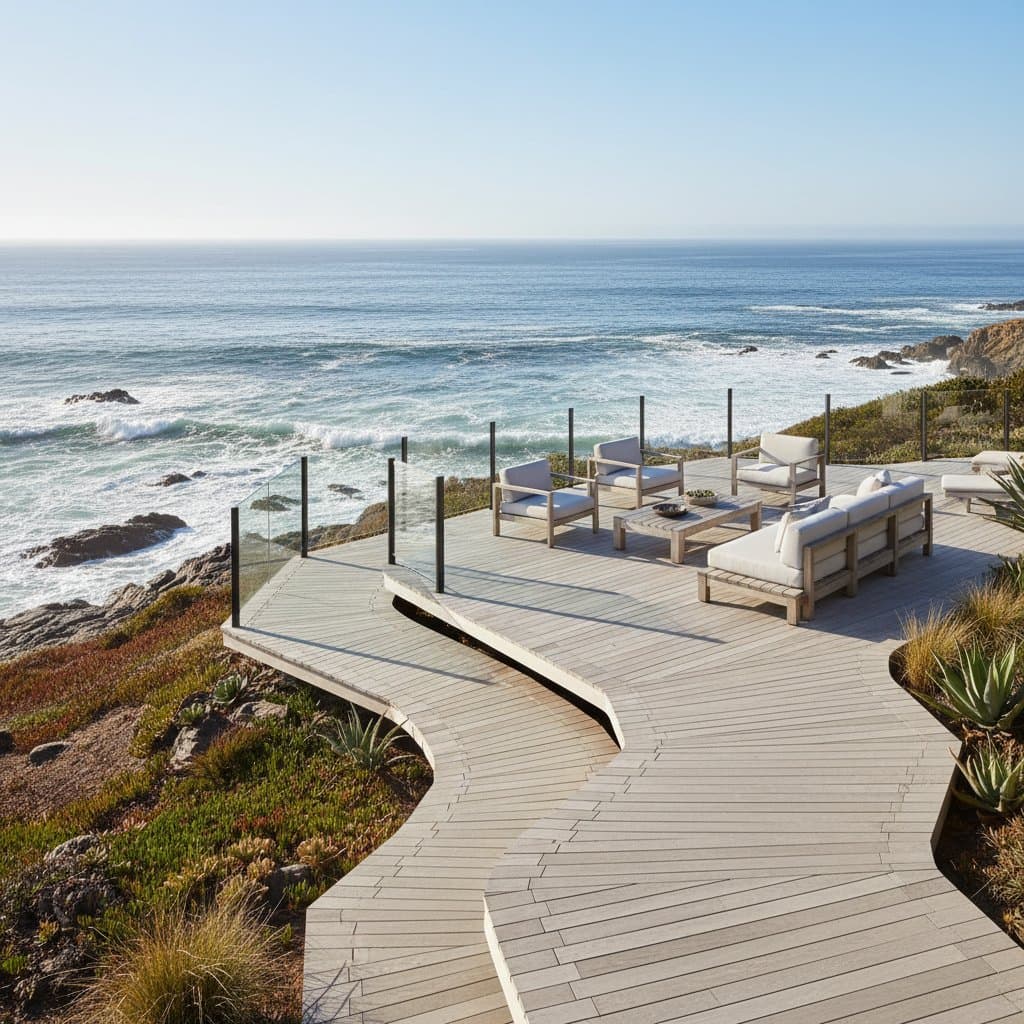Adapting to Coastal Contours: The Living Hinge Deck Advantage
Flexible decking solutions transform outdoor spaces in coastal regions. Living hinge decks provide adaptability and strength, enabling structures to conform to uneven terrain and withstand environmental challenges. These designs prove essential for properties on sloped shorelines, where traditional decks often falter. The result combines structural integrity with an aesthetic that harmonizes with the surrounding landscape.
Installation costs for living hinge decks typically fall between $45 and $85 per square foot. Factors such as material selection, design intricacy, and site preparation influence the final price. Although initial expenses exceed those of conventional options, enhanced durability and minimal upkeep offset the difference over time.
Breaking Down Costs for Living Hinge Decks
Costs vary based on deck configuration, materials, and labor demands. The following table outlines ranges for common project categories.
| Deck Type | Material Example | Cost per Square Foot | Average ROI |
|---|---|---|---|
| Basic flexible composite | Polyethylene blend | $45 - $55 | 65% |
| Mid-range hybrid | Recycled wood composite | $55 - $70 | 72% |
| Premium curved living hinge | Engineered composite panels | $70 - $85+ | 80% |
ROI estimates account for resale value in coastal areas that prioritize outdoor features.
Key Cost Considerations
- Slope grading or reinforcement adds $3 to $8 per square foot.
- Custom hinge or joint systems contribute $10 to $15 per linear foot.
- Coastal weatherproofing treatments range from $1 to $3 per square foot.
- Labor and design services represent 25% to 40% of the total project cost.
Image Placeholder: A builder secures flexible deck panels along a contoured coastal hillside.
Selecting Materials for Coastal Durability
Material choice directly impacts a deck's flexibility, longevity, and visual appeal in salty, windy environments. Each option balances performance attributes to suit specific needs.
Primary Material Choices
- Flexible composite panels consist of recycled polymers and wood fibers, delivering robust elasticity.
- Fiber-reinforced composites incorporate fiberglass or carbon fibers to bolster high-stress areas.
- Thermoplastic decking relies on synthetic formulations for exceptional moisture resistance.
- Engineered hardwood hybrids layer real wood veneers over flexible cores for authentic texture.
Material Performance Overview
| Material Type | Flexibility | Maintenance | Weather Resistance | Appearance |
|---|---|---|---|---|
| Flexible composite | High | Low | Excellent | Modern |
| Fiber-reinforced composite | Moderate | Low | Excellent | Sleek |
| Thermoplastic | Very high | Minimal | Superior | Contemporary |
| Engineered hardwood hybrid | Moderate | Medium | Good | Natural |
Ensuring Deck Longevity in Coastal Settings
Flexible decks require less intensive care than wooden alternatives, yet consistent attention maximizes their lifespan. Homeowners benefit from straightforward routines that preserve functionality.
- Rinse surfaces with mild soap and water quarterly to remove salt residues.
- Examine joints and hinges each year for wear or loosening.
- Reapply UV-protective coatings every two to three years to maintain vibrancy against sun exposure.
- Verify anchors and supports following significant weather events.
- Clear nearby plants and debris to avoid excess moisture retention.
With diligent care, these decks endure 25 to 40 years, varying by material and site conditions.
Common Questions on Living Hinge Decks
How durable are living hinge decks?
Most models withstand 25 to 40 years of use, contingent on material selection and upkeep practices.
Is retrofitting possible on existing structures?
Yes, in certain scenarios, though reinforcements or frame modifications often prove necessary for compatibility.
What is the walking experience like?
The surface remains firm yet yields slightly, enhancing comfort across expansive areas.
How do costs compare to traditional wood?
Flexible options cost 15% to 30% more initially, yet lower repair needs yield long-term savings.
Do they support heavy loads such as furniture or hot tubs?
Reinforced premium variants handle substantial weights when designed by qualified engineers.
What finishes are offered?
Choices span coastal grays, aged browns, sleek charcoals, and neutral sands to complement seaside aesthetics.
Embracing Coastal Flexibility
Living hinge decks extend beyond mere utility; they enhance daily life along the shore. By aligning with natural topography, these installations create secure, inviting areas that blend effortlessly into the environment.
Prospective builders or renovators should evaluate this technology for projects demanding resilience and innovation. The integration of strength, eco-conscious elements, and versatile styling positions living hinge decks as a forward-thinking solution for seaside homes.

